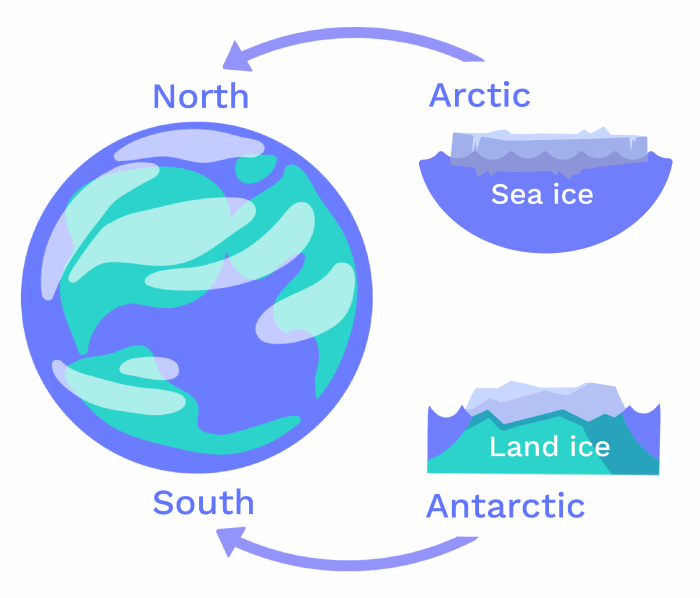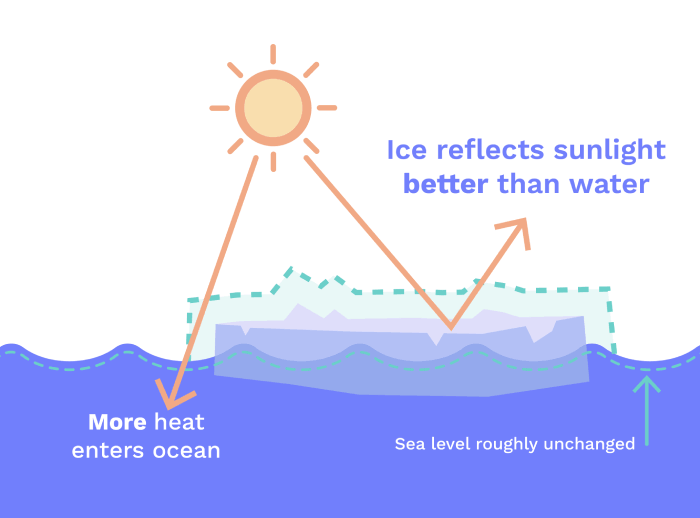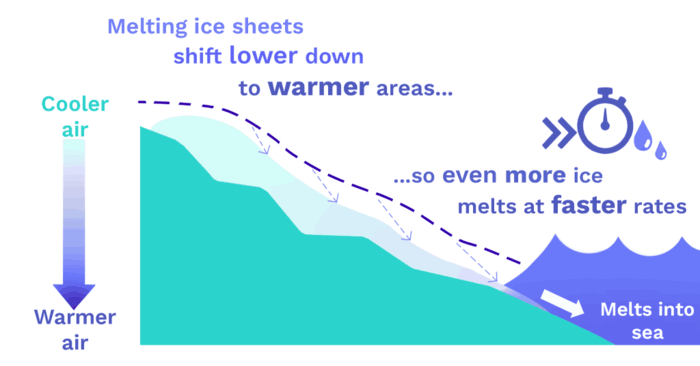Sea Level Rise: What really causes it? Hint: not the Arctic!
6 minute read
Updated on: 14 Dec 2020
Sea levels have changed significantly throughout Earth’s history. 120,000 years ago (during the time between the last 2 ice ages) the average sea level across the globe was over 5 metres higher than it is now! For the past few thousand years, sea levels have been stable
, but since 1901 the average global sea level has risen by 19 centimetres
.

Causes of Sea Level Rise
These huge areas of ice, which rest on land, are called ice sheets. There are two ice sheets in the world, one in Greenland, and one in Antarctica
.
In the past few decades, global warming has caused parts of ice sheets to melt and shrink. Therefore, water once stored on land now spreads out into the ocean
. The Greenland ice sheet lost an average of 278 billion tonnes of ice per year between 2006 and 2015
!
Since 2006, melting ice sheets have caused sea levels to rise 1.8 millimetres a year. This is an even bigger contribution than expansion, which caused an increase of 1.4 millimetres per year in the same time period
.
Why don’t melting icebergs cause sea level rise?
Some ice rests on the sea rather than on land. This is known as sea ice, which can cover huge areas of the ocean, or make up small individual icebergs.
While Antarctica is covered by ice sheets, the ice in the Arctic is largely sea ice.

Sea Ice vs Land Ice
Arctic sea ice melt doesn’t contribute much at all to sea level rise because the extra water simply replaces the ice in the space it filled before.
However, it does mean polar bears have to walk and swim over greater distances which can be particularly dangerous for young cubs. Moreover, melting sea ice increases global warming. This is because ice reflects sunlight much more than water, so without sea ice the oceans absorb more heat, causing them to get warmer
.

Warming from Melting Sea Ice
How will sea level change in the future?
You can see a range of possible forecasts for sea level rise in the graph below.
The average rate of increase in sea levels since 1901 is 1.7 millimetres per year, but if we take the average over 2007 to 2016 this shoots up to roughly 4 millimetres per year
. This increase in the rate of sea level rise is due to more ice melting from ice sheets in Greenland and Antarctica
.
By 2100, if there is no change in climate policy, sea levels are expected to rise by 15 millimetres per year, and several centimetres a year by 2200!
Aren’t Greenland and Antarctic ice sheets potential tipping points?
Yes! Well remembered (if you did)!
If the Greenland and Antarctic ice sheets lose too much ice they will pass a ‘tipping point’. This happens when the area of ice lost becomes so large that it is impossible to stop the rest of the ice sheet from melting too
.
The Greenland ice sheet is heading towards this point because as it melts, it moves to lower areas of land. Because air is warmer on lower land the rate of melting increases.

Ice Sheet melting Feedback
Once these tipping points are crossed, changes are likely to be irreversible for thousands of years
. If the Greenland and western Antarctic ice sheets cross their tipping points, we have to expect several metres of sea level rise in the next few hundred years
. If it melted completely, the Greenland ice sheet alone would contribute 7 metres
!
When will these tipping points be crossed?
Scientists are unsure about exactly when these ice sheets will cross a tipping point.
Some argue the global mean surface temperatures would have to increase by at least 2°C, others say that 1.5°C warming is enough - this is likely to happen as early as 2030
! In fact, some believe we have already crossed ice sheet tipping points
, and if not we are ’dangerously close’
.
This debate is because climate model simulations of ice sheet-ocean interactions still need improvement, so models are likely to be underestimating the rate of ice loss from some ice sheets
.
Will everything be fine if we don’t cross these tipping points?
Even if global warming is limited to 1.5°C and no tipping points are crossed, sea level rise will continue. In fact, even if the amount of greenhouse gas in our atmosphere stayed constant from now on, sea levels would continue to rise for hundreds, even thousands, of years
.
This is due to delayed warming - sea water needs much more energy and time to warm up than land or the atmosphere.
This long term sea level rise will have significant negative impacts for coastal communities and habitats
.
Conclusion
So far we have discussed predictions for sea-level and temperature rise, which will occur pretty much everywhere on Earth. Next, we’re going to take a look at changes that vary depending on where you are: increases in drought and changing rain patterns.
Next Chapter

